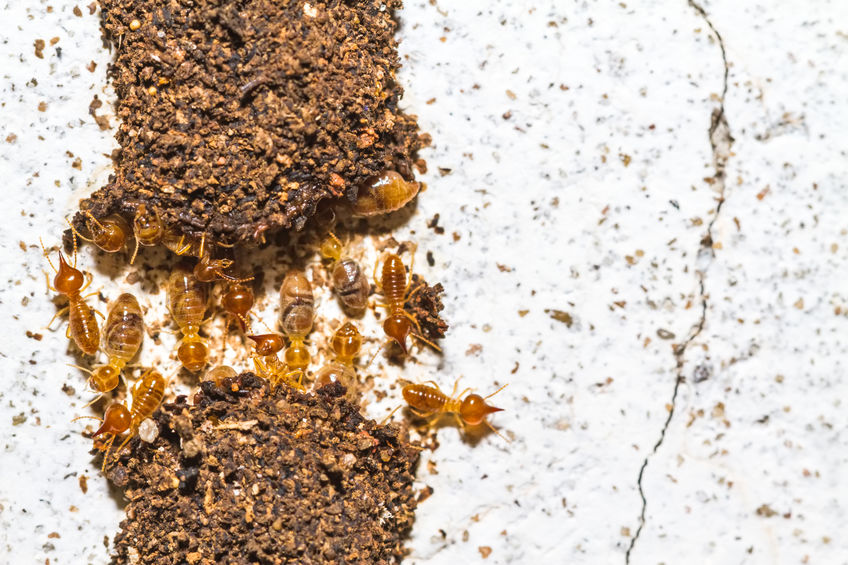Termites are part of an ancient group of insects that has been around for over 120 million years. During this period, they have been pretty successful at entering new environments and muscling out any competition that comes in their way. They are social insects that become active during the summer, and when they interact with humans, they are known to cause billions of dollars in property damage.
The reason these subterranean termites are able rampage through a home is that they are very hard to detect. They will infest wood and quietly eat away at it for years, with the only signs pointing to their presence being the mud tubes that they use to travel from the ground to the wood, and the alates, which are winged reproductive termites sent out into the world to establish new colonies.
You will almost never see a worker or soldier termite out and about. They need to stay inside their colony or else their bodies dry up and they die. However, if you were to see one for yourself, you would notice that it looks oddly like a cockroach. This is because the two species are from the same family. A termite is about half of an inch to an inch long, with a white, broad body that has no waist and with straight antennas that look like a string of pearls close up.
The workers are tasked with maintaining the colony, caring for the young and foraging for cellulose in order to feed themselves, the soldiers, and the king and queen. Soldiers are slightly larger than workers, with a big head and large pincers, and the reproductives of the colony, the alates mentioned previously, are winged, which allows them to fly out of the colony and find a new nesting location. Once the alates find a suitable spot for a colony, they will dig a hole in the ground and start reproducing, with both the king and the queen being able to live for up to 15 years!
So waiting for a subterranean termite colony to die out is completely out of the question. As long as the queen lives, the colony will keep growing and growing, consuming wood at an increasingly faster pace. The only solution is to remove the colony completely, or to place a protective chemical barrier around the foundation of your home. If you would like to know more about what these two processes entail, contact us today

